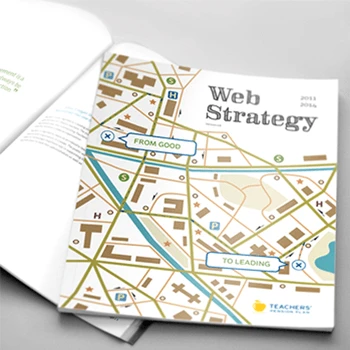What exactly is journey mapping research and why does my organization need it?
Journey mapping research captures the entire end-to-end interaction that people have with your organization. It reveals how users move through your product or service experience, from initial awareness to final outcome. This research helps you understand what users actually do, think, and feel at each stage, rather than what you assume they do. Experience Thinking, as outlined in Tedde van Gelderen's framework, emphasizes that every touchpoint matters in creating connected experiences across brand, content, product, and service.
Tip: Start with understanding your business goals for the map before diving into research - this ensures you're capturing the right insights for actionable outcomes.
How does journey mapping differ from traditional user research methods?
Journey mapping research examines the complete experience lifecycle, not just individual touchpoints. While usability testing focuses on specific interactions and surveys capture attitudes, journey mapping reveals the emotional and contextual flow between all touchpoints. It combines multiple research methods to create a holistic view of how experiences connect across channels, platforms, and time. This approach aligns with Experience Thinking's emphasis on designing for the end-to-end experience rather than isolated product features.
Tip: Think of journey mapping as the emotional love child of task analysis and customer journeys - it captures both what people do and how they feel throughout their experience.
What types of organizations benefit most from journey mapping research?
Organizations with multiple touchpoints, complex service offerings, or customer lifecycle management needs benefit most from journey mapping research. This includes technology companies with both digital and human service interactions, B2B companies with long sales cycles, and organizations looking to break down internal silos. Companies experiencing customer drop-off, confusion about service delivery, or difficulty prioritizing product improvements find journey mapping particularly valuable for identifying innovation opportunities.
Tip: If your customers interact with your organization through more than three different channels or touchpoints, journey mapping research will reveal critical connection points you're likely missing.
How does journey mapping research support business strategy?
Journey mapping research provides strategic insights that feed directly into business planning and resource allocation. By understanding the complete experience lifecycle, organizations can identify which touchpoints drive the most value, where customers experience friction, and which improvements will have the greatest impact on loyalty and retention. This research helps prioritize initiatives in product backlogs and guides strategic decision-making about where to invest in experience improvements across the organization.
Tip: Use journey mapping insights to create business cases for experience improvements by connecting user pain points to specific business metrics like retention rates or support costs.
What's the relationship between journey mapping and customer experience strategy?
Journey mapping research forms the foundation of customer experience strategy by revealing how experiences actually unfold versus how they're designed to work. It identifies gaps between intended and actual experiences, highlights moments that matter most to customers, and reveals opportunities for differentiation. The research provides the evidence needed to build experience strategies that connect all touchpoints into cohesive, intentional customer journeys rather than fragmented interactions.
Tip: Think of journey mapping as the diagnostic tool that informs your customer experience strategy - it shows you what's broken, what's working, and where the biggest opportunities lie.
How does journey mapping research fit into the Experience Thinking framework?
Journey mapping research is essential to Experience Thinking because it reveals how brand, content, product, and service experiences connect in real user journeys. The framework emphasizes that experiences don't exist in isolation - they're part of connected ecosystems. Journey mapping research uncovers these connections, showing how a brand promise translates through content experiences, into product interactions, and through service delivery. This holistic view enables organizations to design truly integrated experiences.
Tip: Use journey mapping to identify where disconnects occur between your four Experience Thinking quadrants - these gaps often represent your biggest opportunities for improvement.
What's the difference between current state and future state journey mapping?
Current state journey mapping documents how experiences actually happen today, revealing pain points, inefficiencies, and opportunities. Future state journey mapping envisions how experiences should work after improvements are made. Current state mapping is diagnostic and research-heavy, while future state mapping is strategic and design-focused. Most organizations need both - current state to understand problems and future state to guide solutions and measure progress toward experience goals.
Tip: Always start with current state mapping before designing future state - you can't fix what you don't understand, and assumptions about current experiences are often wrong.
What research methods are used in journey mapping studies?
Journey mapping research combines multiple methodologies to capture the complete experience picture. Ethnographic observation reveals actual behaviors, contextual interviews uncover motivations and emotions, task analysis documents specific activities, and diary studies capture experiences over time. Digital analytics provide quantitative validation of user paths, while stakeholder interviews reveal internal perspectives. This multi-method approach ensures the map reflects real user experiences rather than assumptions.
Tip: Plan for at least three different research methods in your journey mapping study - behavioral observation, user interviews, and analytics review provide a strong foundation for accurate mapping.
How do you recruit participants for journey mapping research?
Participant recruitment for journey mapping studies requires careful consideration of your user personas and the specific journey you're mapping. Recruit participants who represent your key user segments and have recent experience with the journey you're studying. For complex journeys, consider recruiting participants at different stages of the experience. Screen participants to ensure they match your target personas and have sufficient experience depth to provide meaningful insights about the entire journey.
Tip: Recruit participants who have completed the journey within the last 30 days for current state mapping - their memories will be fresher and more accurate than those who experienced it months ago.
What's the typical timeline for journey mapping research?
Journey mapping research typically takes 8-12 weeks depending on complexity and scope. Planning and recruitment require 2-3 weeks, data collection spans 4-6 weeks (longer for diary studies or complex journeys), and analysis and mapping take 2-3 weeks. Complex journeys with multiple personas or touchpoints may require additional time. The timeline also depends on stakeholder availability for interviews and workshops, and the depth of analysis required for strategic decision-making.
Tip: Build buffer time into your timeline for unexpected insights that require deeper investigation - the most valuable discoveries often come from following unexpected research threads.
How do you ensure journey mapping research is accurate and unbiased?
Accuracy in journey mapping research comes from triangulating multiple data sources and perspectives. Combine user research with analytics data, stakeholder interviews, and observational studies. Use structured research protocols to ensure consistency across participants and sessions. Validate findings with multiple user segments and check insights against quantitative data where possible. Independent researchers can help identify biases that internal teams might miss due to their proximity to the experience.
Tip: Create a research protocol that includes specific questions about emotions, context, and decision-making processes - these elements are often overlooked but crucial for accurate journey mapping.
What role does ethnographic research play in journey mapping?
Ethnographic research is particularly valuable for journey mapping because it reveals how experiences actually unfold in real environments with real constraints. It captures contextual factors that influence user behavior, shows how experiences fit into broader life patterns, and reveals workarounds or adaptations users make. Ethnographic methods help identify environmental factors, social influences, and emotional responses that might not emerge in traditional interview settings but significantly impact the journey experience.
Tip: Use ethnographic observation to understand the 'why' behind user behaviors you see in analytics - the context often reveals opportunities for innovation that aren't obvious from data alone.
How do you validate journey mapping research findings?
Validation of journey mapping research involves multiple checkpoints and perspectives. Share draft maps with research participants to confirm accuracy of their represented experiences. Cross-reference findings with quantitative data like analytics, support tickets, or conversion rates. Validate insights with stakeholders who interact with customers regularly. Use the maps to predict user behavior in specific scenarios, then test those predictions. Validation ensures the maps represent actual experiences rather than researcher interpretation.
Tip: Create a validation workshop where you walk stakeholders through the map step by step, asking them to identify anything that doesn't align with their customer interaction experience.
What's the role of personas in journey mapping research?
Personas provide the lens through which journey mapping research is conducted and analyzed. Different personas may have entirely different journeys through the same service, or they may share journeys but have different goals, pain points, and emotional responses. Personas help ensure research captures the diversity of user experiences rather than assuming one-size-fits-all journeys. They also help prioritize which journey variations matter most to business goals and user satisfaction.
Tip: Start with your primary persona for the first journey map, then layer in secondary personas to understand how journeys differ - this approach prevents the complexity from becoming overwhelming while ensuring key variations are captured.
How do you determine the scope of a journey mapping research project?
Journey mapping scope depends on your business objectives, user complexity, and available resources. Start by identifying the specific journey you want to understand - from initial awareness to final outcome, or focus on a particular lifecycle phase. Consider which personas and touchpoints are most critical to business success. Scope should balance comprehensiveness with actionability - too broad and insights become generic, too narrow and you miss important connections between experience elements.
Tip: Define your journey boundaries clearly before starting research - know exactly where the journey starts and ends, and what touchpoints are included or excluded from the study.
What questions should we ask to define our journey mapping research goals?
Define research goals by asking what specific business challenges you're trying to solve through journey mapping. Are you looking to reduce customer churn, improve conversion rates, streamline operations, or identify innovation opportunities? Consider what decisions will be made based on the research findings and who will use the maps. Understanding these goals shapes the research methodology, participant selection, and analysis focus to ensure actionable insights.
Tip: Write down the specific decisions that will be made based on your journey mapping research - if you can't identify clear decisions, refine your research goals before proceeding.
How do you align journey mapping research with business priorities?
Alignment with business priorities starts with understanding which customer journeys most directly impact key business metrics. Focus research on journeys that drive revenue, affect customer satisfaction scores, or consume significant operational resources. Connect journey mapping insights to business KPIs by identifying which touchpoints influence conversion, retention, or operational efficiency. This alignment ensures research findings translate into prioritized actions that support business objectives.
Tip: Map your business metrics to journey stages before starting research - this helps you focus on the touchpoints that matter most to your organization's success.
What's the role of stakeholder interviews in journey mapping research?
Stakeholder interviews provide crucial internal perspectives on customer journeys and help identify gaps between intended and actual experiences. They reveal operational constraints, business priorities, and internal assumptions about user behavior. Stakeholder insights help shape research questions, identify critical touchpoints to investigate, and provide context for user research findings. These interviews also build organizational buy-in for research findings and implementation of improvements.
Tip: Interview stakeholders from different departments - sales, support, product, and operations often have very different perspectives on the same customer journey.
How do you prioritize which journeys to map first?
Prioritize journey mapping based on business impact, user pain points, and strategic importance. Start with journeys that directly affect key business metrics or represent significant user frustrations. Consider journeys where small improvements could have large impacts, or where you suspect major disconnects between user expectations and current experience. Also prioritize journeys that support strategic initiatives or where you're planning significant investments in experience improvements.
Tip: Create a simple prioritization matrix scoring journeys on business impact versus research complexity - start with high-impact, low-complexity journeys to build momentum and demonstrate value.
What resources are needed for successful journey mapping research?
Successful journey mapping research requires dedicated research expertise, participant recruitment capabilities, and stakeholder engagement time. Plan for research design, data collection, analysis, and visualization phases. You'll need access to participants, analytics data, and internal stakeholders. Consider whether you have the right mix of research skills, domain knowledge, and design capabilities to create actionable maps. Budget for participant incentives, research tools, and potentially external expertise if needed.
Tip: Allocate more time for analysis and synthesis than you initially think you'll need - the most valuable insights often emerge when you have time to dig deeper into patterns across multiple data sources.
How do you get organizational buy-in for journey mapping research?
Build organizational buy-in by connecting journey mapping research to specific business challenges and strategic priorities. Present the research as a way to solve known problems rather than just gather insights. Share examples of how journey mapping has helped similar organizations improve customer experience or operational efficiency. Start with a pilot project on a high-visibility journey to demonstrate value before proposing larger research initiatives.
Tip: Frame journey mapping research as risk mitigation - it helps you avoid investing in solutions that don't address real user needs or that create new problems in other parts of the journey.
How do you translate journey mapping research findings into actionable insights?
Translation of journey mapping research into actionable insights requires connecting user experience findings to specific business opportunities and operational changes. Identify the highest-impact pain points, moments of delight, and gaps between user expectations and current experience. Prioritize insights based on business impact and implementation feasibility. Create specific, measurable recommendations that connect to business metrics and can be assigned to responsible teams for implementation.
Tip: For each insight, identify the specific team or department that can act on it, and provide clear success metrics they can use to measure improvement.
What's the best way to visualize journey mapping research results?
Effective journey mapping visualization depends on your audience and intended use. Executive stakeholders need high-level overviews showing key insights and business impact. Operational teams need detailed maps showing specific touchpoints and improvement opportunities. Use color strategically to highlight pain points, opportunities, and emotions. Include both the rational journey (what users do) and the emotional journey (how they feel). Make maps visually engaging but ensure they remain functional tools for ongoing reference.
Tip: Create multiple versions of your journey map - a detailed working version for teams and a simplified executive summary version that highlights key insights and recommendations.
How do you ensure journey mapping research leads to actual improvements?
Ensure journey mapping research leads to improvements by creating clear implementation roadmaps with specific owners and timelines. Connect research findings to business metrics and track progress over time. Use the maps as living documents that guide ongoing improvement efforts rather than one-time reports. Establish regular reviews to assess improvement progress and update maps based on new insights. Build journey mapping into your organization's ongoing experience improvement process.
Tip: Create a journey mapping improvement tracking system that measures both user experience metrics and business outcomes - this helps demonstrate ROI and maintain momentum for continued improvements.
What's the role of journey mapping in organizational change management?
Journey mapping research serves as a powerful change management tool by providing shared understanding of customer experiences across departments. It helps break down silos by showing how different teams' work connects in the customer journey. Maps provide objective evidence for needed changes and help build consensus around improvement priorities. They also help organizations shift from internal operational focus to customer-centric thinking by making user experiences tangible and visible.
Tip: Use journey mapping workshops to align cross-functional teams around customer experience - the collaborative mapping process often builds as much organizational value as the final maps themselves.
How do you maintain and update journey maps based on ongoing research?
Journey maps should be treated as living documents that evolve with your understanding of user experiences and business changes. Establish regular review cycles to assess map accuracy and relevance. Update maps based on new research findings, customer feedback, and business changes. Track metrics aligned with mapped touchpoints to identify when experiences are improving or degrading. Create processes for stakeholders to contribute insights and updates based on their ongoing customer interactions.
Tip: Set up automated triggers to review journey maps when key business metrics change significantly - this ensures maps remain current and actionable as your business evolves.
What's the connection between journey mapping and service design?
Journey mapping research provides the customer perspective that informs service design decisions. While service design focuses on orchestrating all elements of service delivery, journey mapping reveals how those elements are actually experienced by users. Journey maps show where service design succeeds or fails from the customer perspective, highlighting gaps between intended and actual service experiences. This research ensures service design decisions are based on real user needs rather than internal assumptions.
Tip: Use journey mapping research to validate service design assumptions and identify where service blueprints need adjustment based on actual user experiences.
How do you measure the success of journey mapping research initiatives?
Success of journey mapping research is measured through both process metrics and outcome metrics. Process metrics include stakeholder engagement, research quality, and insight actionability. Outcome metrics track improvements in customer experience, business performance, and operational efficiency. Measure changes in customer satisfaction scores, conversion rates, support ticket volume, and other KPIs connected to mapped journey touchpoints. Success also includes organizational adoption of customer-centric thinking and ongoing use of journey maps.
Tip: Establish baseline metrics for the journey before conducting research, then track improvements over time to demonstrate the ROI of your journey mapping investment.
What tools and platforms are best for journey mapping research?
Journey mapping research requires tools for data collection, analysis, and visualization. Research tools include user interview platforms, survey tools, analytics platforms, and ethnographic research applications. Analysis tools help identify patterns across multiple data sources and participant responses. Visualization tools range from simple presentation software to specialized journey mapping platforms. The best tools depend on your research methodology, team capabilities, and intended use of the final maps.
Tip: Choose tools that integrate well with your existing workflow and can export data in formats your team can easily use for ongoing analysis and updates.
How do you handle data privacy and participant confidentiality in journey mapping research?
Data privacy and participant confidentiality require careful planning and clear protocols. Obtain proper consent for all research activities and data usage. Anonymize participant data during analysis and in final deliverables. Secure data storage and access controls protect participant information. Be transparent about how research data will be used and shared within your organization. Consider legal requirements for data handling in your jurisdiction and industry.
Tip: Create a data handling protocol before starting research that clearly outlines how participant information will be collected, stored, analyzed, and eventually disposed of.
What's the best approach for remote journey mapping research?
Remote journey mapping research requires adapted methodologies but can provide valuable insights. Use video conferencing for interviews and screen sharing for observational studies. Digital diary studies work well for capturing experiences over time. Remote research can actually provide more natural context since participants remain in their usual environments. However, you may miss some non-verbal cues and environmental factors that in-person research would capture.
Tip: Combine synchronous remote sessions with asynchronous methods like diary studies or photo documentation to capture both real-time insights and reflective observations.
How do you integrate quantitative and qualitative data in journey mapping research?
Integration of quantitative and qualitative data provides a complete picture of user journeys. Quantitative data from analytics, surveys, and metrics shows what users do and where they experience issues. Qualitative data from interviews and observations reveals why users behave as they do and how they feel about their experiences. Use quantitative data to identify patterns and priorities, then use qualitative insights to understand the human story behind the numbers.
Tip: Start with quantitative data to identify the most critical touchpoints and pain points, then focus qualitative research on understanding those areas in depth.
What's the role of analytics in journey mapping research?
Analytics provide objective data about user behavior patterns, conversion points, and abandonment locations throughout journeys. They show where users spend time, which paths they take, and where they exit the journey. Analytics help validate qualitative research findings and identify issues that might not emerge in interviews. However, analytics show what happens but not why it happens, making them most valuable when combined with qualitative insights.
Tip: Use analytics to identify anomalies or unexpected patterns in user behavior, then use qualitative research to understand what's driving those patterns.
How do you ensure journey mapping research is culturally sensitive and inclusive?
Cultural sensitivity and inclusion in journey mapping research requires diverse participant recruitment, culturally appropriate research methods, and awareness of different communication styles and preferences. Consider how cultural factors might influence user behavior, decision-making processes, and emotional responses. Use research methods that accommodate different comfort levels with sharing personal information. Ensure your research team includes diverse perspectives to identify potential cultural biases in interpretation.
Tip: Review your research protocol with team members from different cultural backgrounds to identify potential issues or misunderstandings before launching the study.
What are common pitfalls to avoid in journey mapping research?
Common pitfalls include assuming one journey fits all users, focusing too much on digital touchpoints while ignoring human interactions, and creating maps that are too complex to be actionable. Avoid making journey maps that reflect internal organizational structure rather than user experiences. Don't rely solely on stakeholder assumptions without validating with actual users. Ensure maps capture emotional aspects of the journey, not just functional steps. Avoid creating maps that are purely descriptive without providing actionable insights.
Tip: Test your journey maps with people who weren't involved in creating them - if they can't quickly understand and use the maps, they're probably too complex or unclear.
How do you calculate the ROI of journey mapping research?
ROI of journey mapping research is calculated by measuring improvements in key business metrics attributable to experience changes guided by the research. Track metrics like customer retention rates, conversion improvements, reduction in support costs, and increased customer lifetime value. Compare baseline metrics from before the research to post-implementation results. Factor in the cost of research, implementation of improvements, and ongoing maintenance of journey maps. ROI often includes both direct financial benefits and strategic value of customer insights.
Tip: Establish clear baseline metrics before starting journey mapping research, and track improvements over at least 6-12 months to capture the full impact of experience changes.
What business challenges does journey mapping research solve most effectively?
Journey mapping research is most effective for solving challenges related to customer experience disconnects, operational inefficiencies, and strategic uncertainty about experience investments. It helps identify why customers abandon processes, where experiences break down between departments, and which touchpoints have the greatest impact on business outcomes. The research is particularly valuable for organizations struggling with customer retention, unclear conversion paths, or difficulty prioritizing experience improvements.
Tip: Use journey mapping research to solve specific business problems rather than general exploration - focused research produces more actionable insights and clearer ROI.
How does journey mapping research support product development decisions?
Journey mapping research informs product development by revealing how products fit into broader user workflows and life patterns. It shows which product features matter most in real usage contexts, where products create friction in user journeys, and opportunities for innovation. The research helps prioritize product roadmaps based on actual user needs rather than internal assumptions. It also identifies where product improvements can have the greatest impact on overall user experience and business outcomes.
Tip: Use journey mapping research to validate product assumptions before major development investments - it's much cheaper to discover usability issues during research than after product launch.
What's the relationship between journey mapping research and customer retention?
Journey mapping research reveals the factors that drive customer retention by showing where positive and negative experiences occur throughout the customer lifecycle. It identifies moments that build loyalty, touchpoints that create frustration, and opportunities to exceed expectations. The research helps organizations understand which experience improvements will have the greatest impact on retention rates. It also reveals early warning signs of customer dissatisfaction that can be addressed before customers churn.
Tip: Pay special attention to the post-purchase or onboarding phases of the journey - these early experiences often determine long-term customer retention.
How do you use journey mapping research to build competitive advantage?
Journey mapping research builds competitive advantage by revealing opportunities to differentiate your experience from competitors. It shows where your organization can exceed customer expectations, eliminate friction that competitors haven't addressed, or create unique value propositions. The research helps identify underserved needs in the market and opportunities to innovate around experience design. It also reveals how to position your organization's strengths relative to competitor weaknesses in the customer journey.
Tip: Compare your journey maps with competitor experiences to identify specific touchpoints where you can create differentiation and competitive advantage.
What's the long-term value of journey mapping research for organizations?
Long-term value of journey mapping research includes building organizational customer-centricity, creating a foundation for ongoing experience improvements, and developing capabilities for understanding evolving customer needs. The research creates shared understanding across departments, enables data-driven experience decisions, and builds competitive advantage through superior customer experience. Organizations that invest in journey mapping research develop better customer empathy and more effective experience design capabilities over time.
Tip: Think of journey mapping research as an investment in organizational learning and customer understanding that pays dividends across multiple projects and initiatives over time.
How do you demonstrate the strategic value of journey mapping research to executives?
Demonstrate strategic value by connecting journey mapping research to key business objectives and competitive positioning. Show how the research reduces risk of experience investments, identifies revenue opportunities, and provides insights for strategic decision-making. Present concrete examples of how journey mapping findings have led to measurable business improvements. Frame the research as essential for understanding and serving customers better than competitors, which drives long-term business success.
Tip: Present journey mapping research results in the context of strategic business challenges and opportunities rather than just user experience improvements - this helps executives understand the broader business value.
How does journey mapping research support innovation and growth strategies?
Journey mapping research supports innovation by revealing unmet needs, highlighting gaps in current solutions, and identifying opportunities for new products or services. It shows where users create workarounds or abandon processes, suggesting areas for innovation. The research helps validate new concept ideas by showing how they would fit into existing user journeys. It also identifies adjacent opportunities where your organization could extend its value proposition to serve customers better.
Tip: Look for patterns in user workarounds and frustrations during journey mapping research - these often reveal opportunities for innovative solutions that create significant competitive advantage.
What's the role of journey mapping in digital transformation initiatives?
Journey mapping research plays a crucial role in digital transformation by showing how digital and physical experiences need to connect seamlessly. It reveals where digital solutions can improve existing journeys and where human touchpoints remain essential. The research helps prioritize digital investments based on actual user needs rather than technology capabilities. It also identifies where digital transformation efforts might create new friction if not properly integrated with existing journey elements.
Tip: Use journey mapping to ensure digital transformation efforts improve the overall experience rather than just digitizing existing processes - often the biggest value comes from reimagining the entire journey.
How do you use journey mapping research to identify new market opportunities?
Journey mapping research reveals new market opportunities by showing underserved needs, inefficient processes, and gaps in current solutions. It identifies where users struggle with existing options, pay premium prices for poor experiences, or create their own solutions. The research helps understand broader user contexts that might suggest adjacent market opportunities. It also reveals where your organization's capabilities could solve problems outside your current market focus.
Tip: Pay attention to activities that happen before and after your current service focus - these often reveal opportunities to expand your market reach by addressing broader user needs.
What's the connection between journey mapping and ecosystem thinking?
Journey mapping research reveals how your organization fits into broader user ecosystems and partner networks. It shows where users interact with multiple organizations to complete their goals, suggesting opportunities for partnerships or ecosystem expansion. The research helps understand how your experience connects with other services users employ, identifying opportunities to create more integrated solutions. It also reveals where ecosystem approaches might create competitive advantages.
Tip: Map the complete user ecosystem, not just interactions with your organization - this reveals partnership opportunities and helps you understand your role in broader user workflows.
How does journey mapping research inform experience strategy evolution?
Journey mapping research provides the insights needed to evolve experience strategy as markets, technologies, and user expectations change. It shows which aspects of current experience strategy are working and which need adjustment. The research helps identify emerging patterns in user behavior that might signal strategic shifts. It also provides baseline understanding that enables measurement of strategic changes over time. Regular journey mapping research helps organizations stay aligned with evolving user needs.
Tip: Conduct journey mapping research regularly to track how user expectations and behaviors evolve - this helps you stay ahead of market changes rather than react to them.
What emerging trends are shaping the future of journey mapping research?
Emerging trends in journey mapping research include real-time journey tracking through digital touchpoints, AI-powered pattern recognition in user behavior, and integration with predictive analytics to anticipate user needs. There's growing focus on emotional journey mapping and the impact of contextual factors on experience. Multi-channel and omnichannel journey mapping is becoming more sophisticated, and there's increased emphasis on continuous journey optimization rather than point-in-time mapping.
Tip: Stay current with journey mapping technology advances, but remember that the core value comes from understanding human experiences - technology should enhance insight quality, not replace human understanding.












